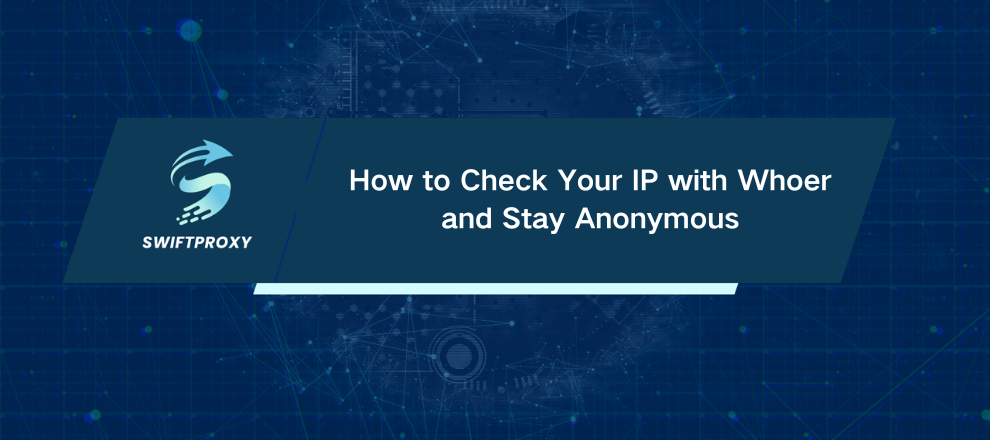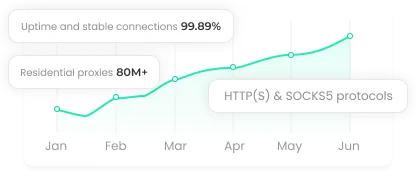How to Check Your IP with Whoer and Stay Anonymous
Your IP address is more than just a string of numbers—it’s your digital footprint. Every time you go online, your device broadcasts details about where you are, your network, and sometimes even who you are. That’s why tools like Whoer.net aren’t just nice to have—they’re crucial. Today, we’re diving deep into using Whoer for IP checking, anonymity analysis, and actionable tips to protect your online identity.

Understanding Whoer.net
Whoer.net is a fast, reliable online tool that gives you a snapshot of your network and device information. In seconds, it reveals:
Your current IP address and approximate location
Browser type and version
Operating system information
Internet Service Provider (ISP)
Proxy usage and anonymity detection
It's a favorite for both cybersecurity pros and casual users who want to make sure their online activity isn't leaving tracks. Think of it as a security mirror—reflecting what the web sees when you connect.
Why Your IP Address Matters
An IP address isn't just a number—it's a key to understanding your online presence. Here's what it does:
Device Position: Helps servers pinpoint your device.
Data Transmission: Ensures information reaches the right destination.
Network Safety: Detects suspicious access and potential threats.
Geolocation: Reveals a general city or country for your connection.
Knowing your IP is the first step in shielding your privacy. It tells you if your real identity is exposed or if proxies and anonymity tools are doing their job.
Checking Your IP on Whoer.net
Getting started is simple. Follow these steps:
Open your browser and go to Whoer.net.
The homepage instantly shows your IP and basic network info.
Click "Check your anonymity" for a deeper dive. You'll get details like:
IP location and ISP
DNS and hostname
Browser and OS info
Proxy usage
Anonymity tool detection
Blacklist status
Whoer even offers optimization tips: disabling WebRTC leaks, changing plugins, and other tweaks to enhance your privacy.
Is Whoer.net Free
Yes. Basic IP and network checks are free. Advanced features, like full anonymity scoring and detailed analysis, may require a paid plan or membership. But even free users can get significant insights into their online footprint.
Why Your Anonymity Score Might Not Hit 100%
Even with proxies and privacy tools, hitting a perfect anonymity score is tough. Here's why:
Browser Fingerprints: Fonts, plugins, and settings can reveal your identity.
Network Performance: Free or low-quality proxies can leak data.
System Settings: Screen resolution, OS version, and language preferences all affect tracking.
Getting closer to 100% requires fine-tuning across browser, network, and system configurations.
How to Boost Your IP Security Score
Want a higher score? Here's how to level up:
Use reliable proxies like Swiftproxy.
Block or limit WebRTC and JavaScript leaks.
Browse securely with Tor Browser or private/incognito mode.
Clear cache and cookies regularly.
Adjust system and browser settings (fonts, resolution, language) to make tracking harder.
Small tweaks here and there can make a huge difference in how anonymous you appear online.
Alternatives to Whoer.net
Whoer is excellent, but it's not the only tool out there. Other options include:
|
Tool |
IP Leak Detection |
Browser Fingerprint |
Interface |
Info Provided |
Technical Skill |
Completeness |
|
IPinfo.io |
Yes |
No |
Simple |
IP, ISP, Geolocation |
Low |
High |
|
ipleak.net |
Yes |
Yes |
Medium |
IP, Browser Info |
Medium |
High |
|
BrowserLeaks.com |
Yes |
Yes |
Medium |
Browser Fingerprint, WebRTC, Plugins |
Medium |
Very High |
|
WhatIsMyIP.com |
Yes |
No |
Simple |
IP, ISP, Geolocation |
Low |
Medium |
Quick guide for choosing:
Beginners: Whoer.net or WhatIsMyIP.com—straightforward and intuitive.
Privacy-focused: BrowserLeaks.com—deep browser fingerprint and leak analysis.
Professional network control: IPinfo.io—detailed ISP and network structure insights.
Conclusion
Whoer.net is a powerful tool for anyone serious about IP checking and online anonymity. But don't stop there. Pair it with reliable proxies, browser tweaks, and complementary tools for a fuller picture of your digital footprint. In 2025, protecting your privacy isn't optional—it's a necessity. And Whoer.net makes that task far easier.

















































